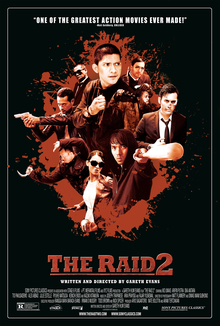I would watch this movie without the CGI.
This past season on Community,
we were treated to a course at Greendale that asked the question, “Nicolas
Cage: Good or Bad?” His track record over the last decade and a half has ached
for the question, and as Troy puts it in the episode, “He keeps getting hired
for some reason and it’s not because of his hair.” Terrible hair or not,
Nicolas Cage is a perfectly capable actor who knows what he’s doing even if
that means his resume looks bad after the last few years.
TMZ and other sources will no doubt remind you of Cage’s
financial troubles, and while that no doubt informs his decisions to accept
roles like Drive Angry or both Ghost Rider movies, I don’t believe that
in influences the performances themselves. For instance, Drive Angry is an abysmal movie, but what keeps my attention
throughout is Nicolas Cage’s performance. It’s by no means deserving of an Oscar,
but he’s easily the best thing about it. He’s the brooding dark hero out to get
revenge on the cult leader who wronged him—I forget how—who drives straight out of hell. It’s a
preposterous concept, and Cage plays it straight and it works. But I don’t
think it could’ve worked for anyone else.
36 of his films on Rotten Tomatoes with Tomatometer ratings
are rotten, yet 29 of them are all “fresh.” Mathematically, it almost puts him
as average at best if we go on ratings alone. Most of those fresh ratings are
pre-2000, which is disappointing to see. His golden years were certainly the
nineties, where he balanced between the action movies and dramas. Here’s where
we got Leaving Las Vegas and Face/Off, Red Rock West and The Rock.
There is a noticeable decline in the overall quality of the films Nicolas Cage
stars in post-2000, but I don’t believe Cage’s performances do not suffer for
it.
For example, in a video that has long since been deleted
from the Internet by Sony’s goon squad, a behind-the-scenes featurette for Ghost Rider: Spirit of Vengeance reveals
Cage’s method for depicting a vengeful flaming skull: he paints his face like a
skull and hoods himself with glow sticks. I confess I haven’t seen that movie,
only the BTS clip, but that can’t possibly be the work of a boringly bad actor.
Over the top for sure, but never dull. You can’t look away from him.
The 2006 magnum opus to over-the-top Crank starring Jason Statham was supposed to star Nicolas Cage and
was written with him in mind. It certainly seems to fit Cage’s consistently
manic performances. Imagine Nicolas Cage driving through a shopping mall,
chased by cops, all the while talking to Dwight Yoakum on the phone. The fact that someone had him in mind while
writing that script of madness speaks volumes about Cage’s performance.
As of this writing, Cage has seven movies coming up, two of which are sequels and one of which is a remake. They’re all over—one’s a cartoon, one’s an adventure, another’s a religiously inspired thriller. In 2011 alone, he put out five movies. He seems to be slowing down in terms of output, and I haven’t seen any of his more recent efforts. Maybe now he’s the terrible actor so many claim him to be. But they’re still watching him.
As of this writing, Cage has seven movies coming up, two of which are sequels and one of which is a remake. They’re all over—one’s a cartoon, one’s an adventure, another’s a religiously inspired thriller. In 2011 alone, he put out five movies. He seems to be slowing down in terms of output, and I haven’t seen any of his more recent efforts. Maybe now he’s the terrible actor so many claim him to be. But they’re still watching him.








